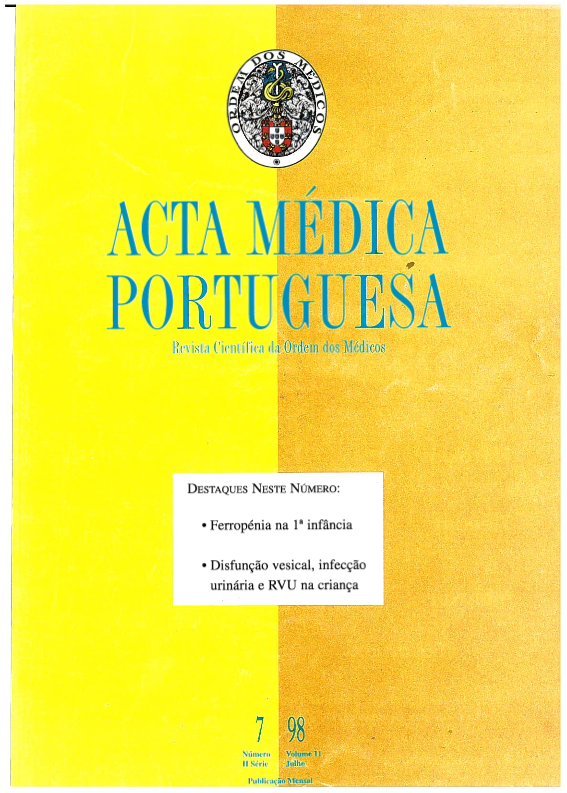Cardiologia pré-natal. Da suspeita à confirmação.
DOI:
https://doi.org/10.20344/amp.2302Resumo
The mortality rate is high and prognosis is worse among new-borns with prenatal diagnosis of heart malformation, mainly due to factors such as its association with other malformations, and a range of more severe diseases probably resulting from the predominance of the obstetric use of the four chamber view. In this study we retrospectively assessed the range of cardiopathies diagnosed by foetal echocardiography and their evolution, compared with previous years. From January 1994 to December 1995, 1173 foetal echocardiograms were performed at a gestation age of 24 weeks. Sixty-one foetuses (5.2%) had cardiac anomalies, structural in 56 and arrhythmia in 5. The risks and indications were maternal in 37%, foetal in 31%, familial in 17% and environmental in 15%. Three were false negatives (VSD:2; truncus arteriosus: 1). Five died in utero, and 18 were assessed after birth with a mean gestational age of 37 weeks and birth weight of 3 Kg, a caesarean section was performed in 9. All but one were born in central hospitals. Six children were operated on. Two children died, one after surgery. Compared with the four previous years of activity, indication due to foetal risk rose from 6 to 31%, the number of cases diagnosed with heart disease increased from 14 to 30 per year, and the mortality decreased from 59 to 11%. Despite this, we still observe that the vast majority of new-borns who are hospitalised due to a severe heart disease had no prenatal diagnosis, indicating the need to continue our educational policy in this field.Downloads
Downloads
Como Citar
Edição
Secção
Licença
Todos os artigos publicados na AMP são de acesso aberto e cumprem os requisitos das agências de financiamento ou instituições académicas. Relativamente à utilização por terceiros a AMP rege-se pelos termos da licença Creative Commons ‘Atribuição – Uso Não-Comercial – (CC-BY-NC)’.
É da responsabilidade do autor obter permissão para reproduzir figuras, tabelas, etc., de outras publicações. Após a aceitação de um artigo, os autores serão convidados a preencher uma “Declaração de Responsabilidade Autoral e Partilha de Direitos de Autor “(http://www.actamedicaportuguesa.com/info/AMP-NormasPublicacao.pdf) e a “Declaração de Potenciais Conflitos de Interesse” (http://www.icmje.org/conflicts-of-interest) do ICMJE. Será enviado um e-mail ao autor correspondente, confirmando a receção do manuscrito.
Após a publicação, os autores ficam autorizados a disponibilizar os seus artigos em repositórios das suas instituições de origem, desde que mencionem sempre onde foram publicados e de acordo com a licença Creative Commons









